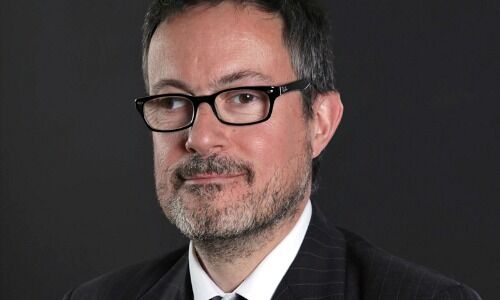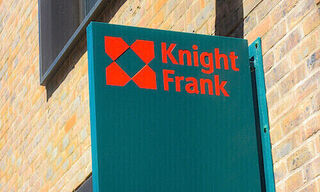Originally, socially responsible investing referred to shares of companies that were not in the alcohol, gambling, arms or tobacco business, or that served the environment. But this has changed, says Marc Briand, a bond expert at Mirova, in an interview with finews.asia.
More than 500 billion Swiss francs are now invested worldwide in so-called green bonds. Compared with other asset classes, this is still a very small proportion. However, the growth prospects are enormous - for various reasons, as Marc Briand, a bond expert at Mirova, explains in an interview with finews.ch. The French company is a subsidiary of asset manager Natixis Investment Managers and is one of the largest providers of green bonds.
Marc Briand, first of all, how do you define green bonds at all?
Originally, socially responsible investing referred to shares of companies that were not in the alcohol, gambling, arms or tobacco business, or that served the environment.
«Green bonds offer a high degree of transparency in the use of the financial resources provided»
For about four years now this investment approach has also included bonds issued by companies or government agencies for environmental or climate protection projects. So-called green bonds support initiatives for clean water, renewable energy or energy efficiency.
Environmental concerns are indeed a very important issue on today’s agenda of the general public, as the many demonstrations and other mass events show. But why are financial investors, who are primarily interested in a return on investment, so enthusiastic about this topic?
There are various reasons for this: Green bonds offer a high degree of transparency in the use of the financial resources provided. They are based on standardized sustainability principles, they tie the proceeds of the issue to environmental and social projects, and issuers typically have the earmarking of the financial resources checked by an independent party.
This is important for institutional investors who, because of the demands of green bonds, want to know very precisely what happens with their money. Furthermore, this asset class is indispensable in portfolio construction, especially in times of negative interest rates.
Why?
Because numerous studies have shown that green bonds are no longer inferior to other bonds in terms of yield, and in some cases even exceed them. These markets offer now arbitrage opportunities. But I would like to mention another aspect: While green bonds are still a small market today.
«Public awareness of sustainable concerns in the broadest sense is very advanced in many countries»
But in view of the foreseeable legal changes in many countries, especially in Europe, many companies will adapt their financing policies accordingly, so that green bonds will continue to expand.
What was the trigger that made Green Bonds appear on the radar screen of the financial world over the past ten years?
In my opinion, the market for green bonds really got going in 2012 with the first major European Investment Bank issue of 500 million euros. This was followed by renewable energy projects such as solar and wind and energy efficiency in buildings, for example.
On an international level, Europe seems to be ahead in terms of issuing sustainable investments. Why is this so?
This is in fact the case. Public awareness of sustainable concerns in the broadest sense is very advanced in many countries, especially in Western Europe. The main purpose of green, social and sustainable bonds is to generate additional financial resources for them.
«There are clear goals for this»
In other words, they are intended to help move the global economy towards sustainability and climate goals and, for example, to reduce harmful global warming. There are also clear goals for this: To achieve the Paris climate scenario of global warming by a maximum of 2 degrees Celsius, the OECD estimates that investments in infrastructure of almost seven trillion dollars per year by 2035 are necessary.
Against this background, there is a conviction that green bonds, in particular, can serve to mobilize private capital for environmental and climate protection. In this context, it is also noteworthy that the supply of issuers has already changed noticeably.
In what way?
For about two years now, more and more green bonds from issuers in the industrial, communications, technology and insurance sectors have been coming onto the market.
«Even the automotive industry is setting a good example»
In other words, even companies that are not necessarily big environmental advocates are now looking to take advantage of the global trend to launch green initiatives and issue bonds. Even the automotive industry is setting a good example and wants to finance further development and production of electric vehicles with green bonds.
This answer inevitably raises the question: Who will buy all these green bonds?
The European Central Bank (ECB) will probably be in the front line, having recently resumed its quantitative easing program in the wake of the Corona crisis. It intends to buy bonds for 20 billion euros a month. And because only euro-denominated bonds are permitted in this context, green bonds will also benefit.
«Other countries will now follow in the further course of the year»
New funds and other investment vehicles will also help to ensure that this asset class will continue to experience growing demand among private investors.
What is the next step after Corona?
In the past, most green bonds have been issued by government issuers, financial institutions and energy companies. Government bonds currently account for around a quarter of the market for green euro bonds. France and Ireland issued green bonds for the first time in 2019.
Other countries will now follow in the further course of the year. Germany, for example, has announced an issue of ten billion euros. Italy and Sweden are also in the planning phase. Other corporates may issue soon, maybe in the automotive sector. We are well on the way for the green bond market to rocket very soon.
Marc Briand is Head of Fixed Income at Mirova, a subsidiary of Natixis Investment Managers. He started his career in 1988 within the CDC group as a sales manager. He joined Natixis Asset Management in 1990 as a fixed income portfolio manager. From 1996 to 1998, he was responsible for securitization at Caisse Centrale des Caisses d'Epargne. In 2000, he became a senior euro bonds portfolio manager and was promoted to head of the multi-strategies team. He joined Mirova in 2013. He has more than 30 years of experience in the investment industry. Has managed the Euro Aggregate Strategy and has been involved in ESG strategies since 2008 and green Bonds investments since 2012. He is a graduate of the Institut Supérieur de Gestion (ISG) in Paris.


























